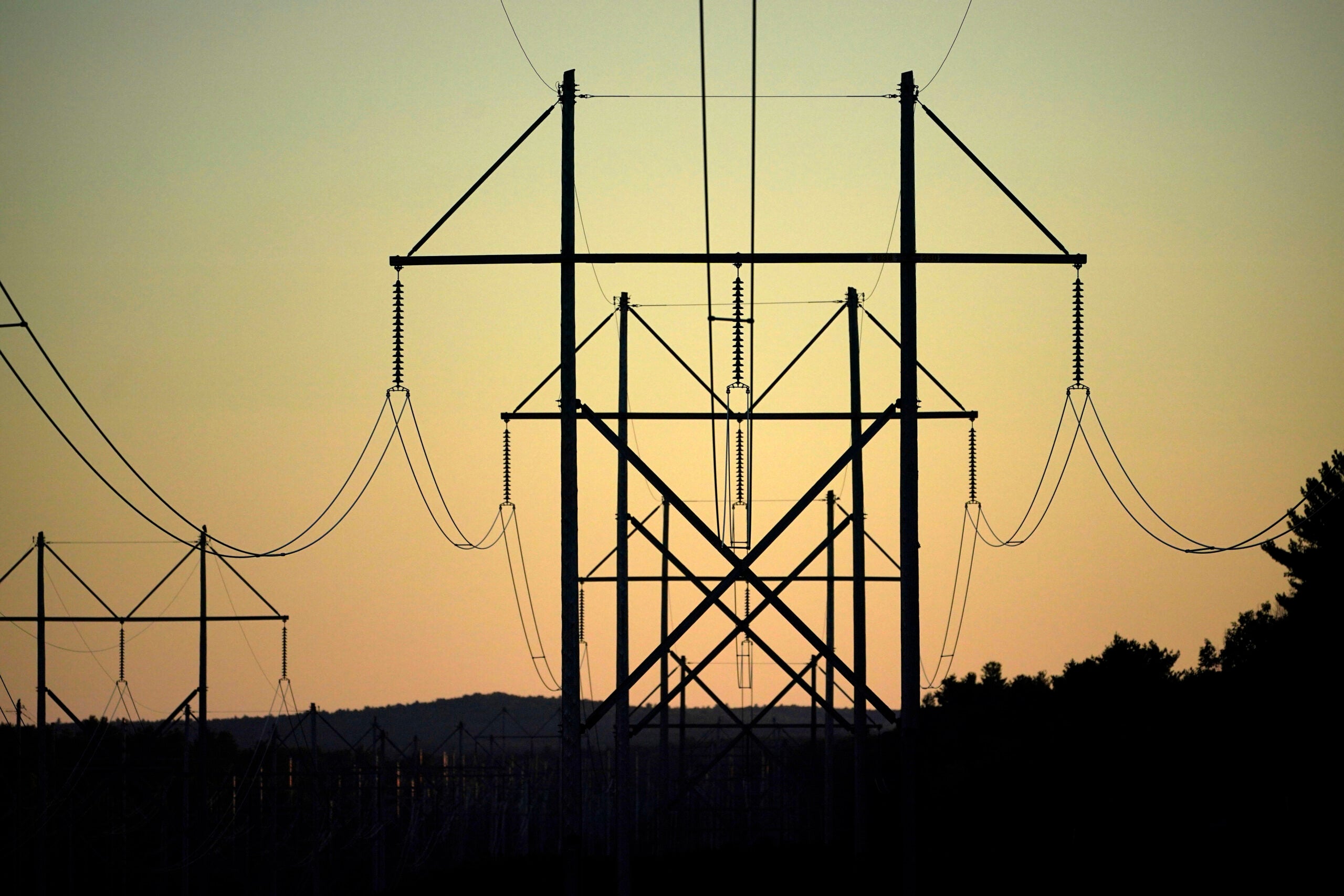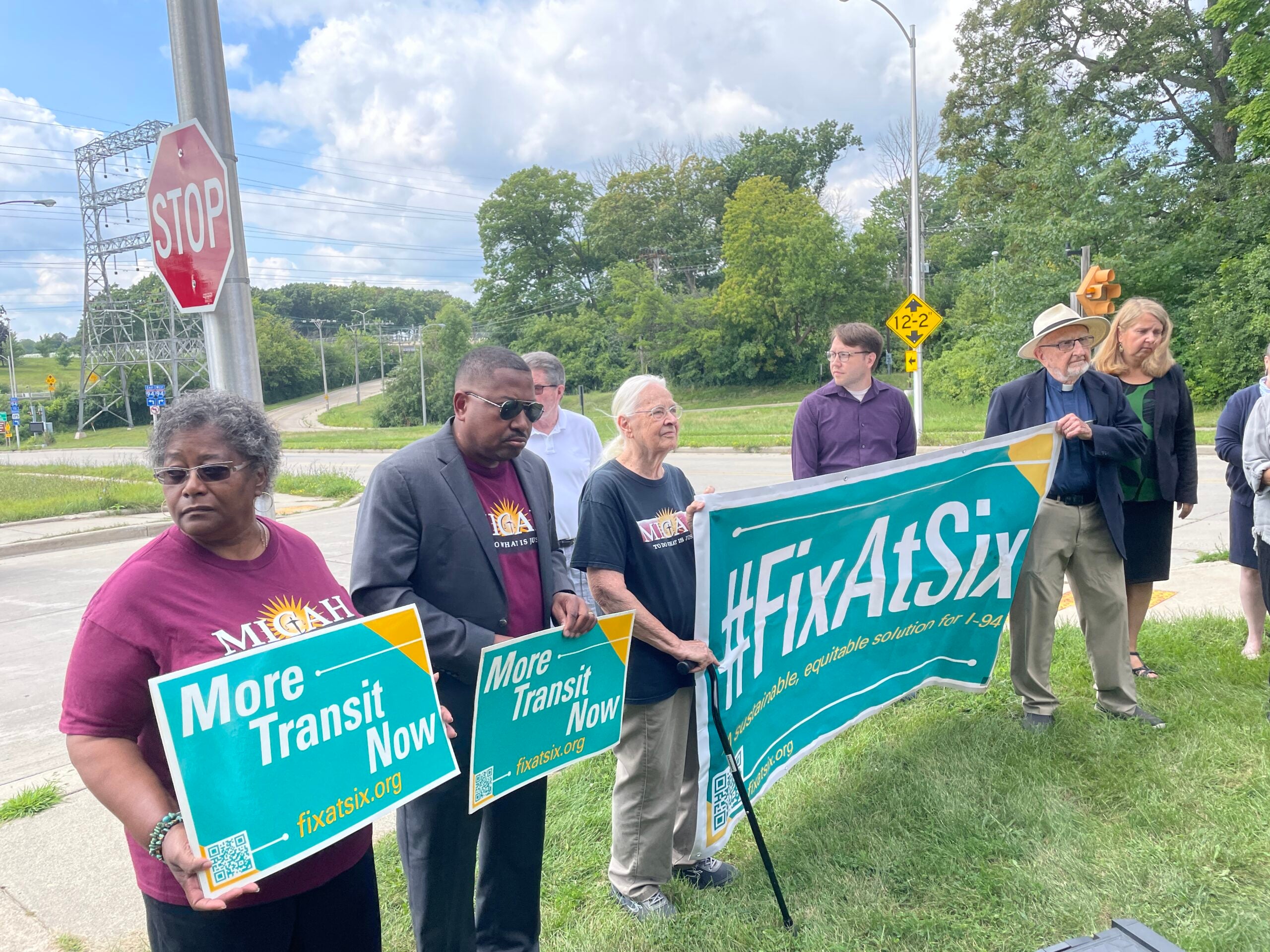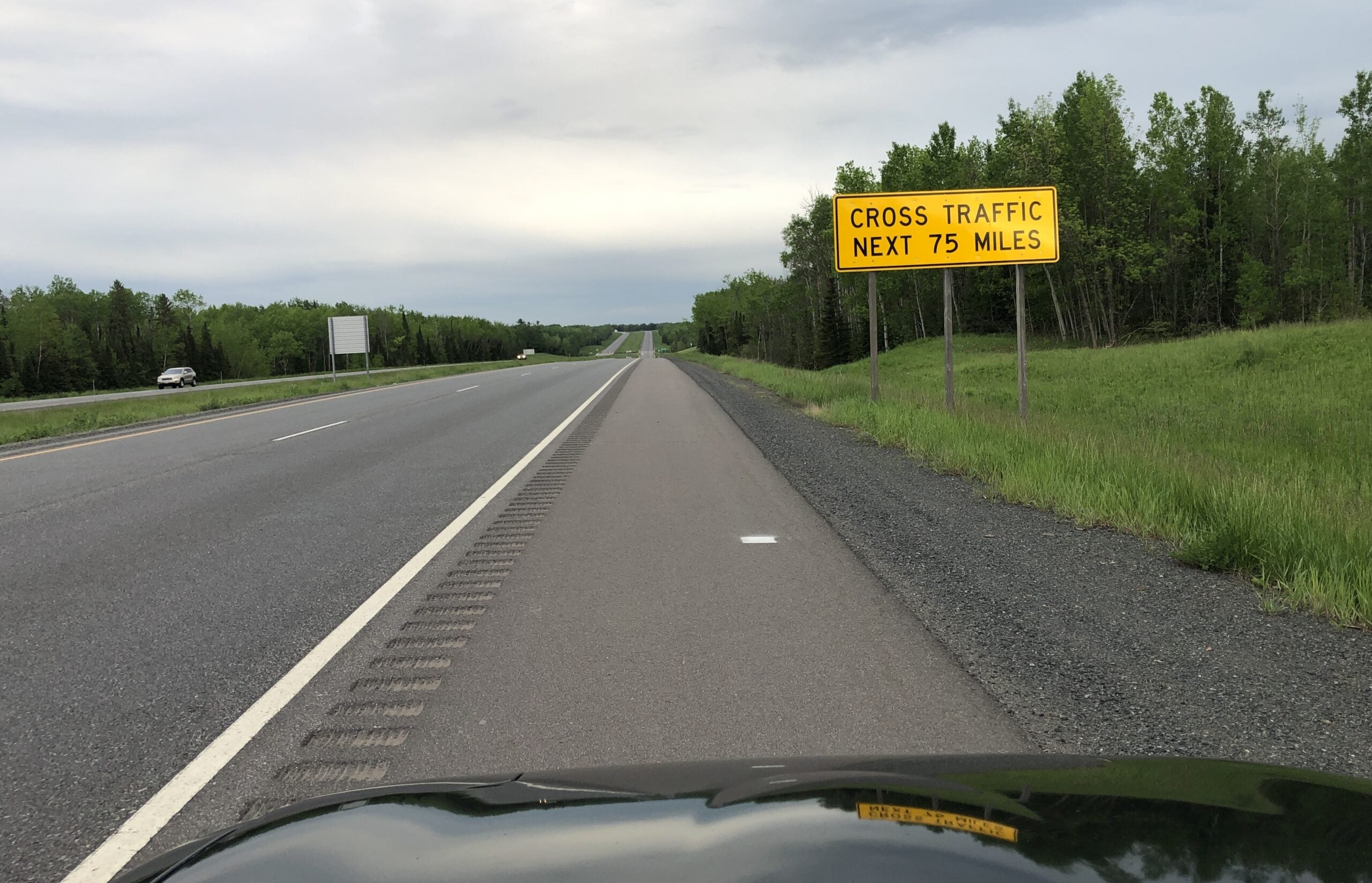Green Bay’s congressman hopes the third time’s the charm for a bipartisan bill aimed at addressing safety issues facing truck drivers in the logging industry.
That was the message when U.S. Rep. Mike Gallagher, R-Green Bay, held a press conference outside the Resch Expo Center Monday after a ride-along in a logging truck.
Earlier this month, Gallagher and U.S. Rep. Jared Golden, D-Maine, introduced the Safe Routes Act of 2023. The bill would allow logging trucks that meet state weight limits to drive on interstate highways. Logging trucks are currently barred from using interstate highways due to federal weight limits, causing them to use state and county highways, as well as city streets.
Stay informed on the latest news
Sign up for WPR’s email newsletter.
Gallagher introduced similar legislation in 2021 and 2019, but those bills failed to pass. This time around, he said, having Republicans in control of the U.S. House of Representatives could give it a better chance.
“I’m hoping we’ll be able to at least get it through the Transportation (and) Infrastructure Committee and then off the House floor,” he said. “We have more bipartisan support this time, as well.”
Gallagher said regulations barring logging trucks from using interstate highways are “outdated” and, he believes, dangerous because they force trucks to cross school zones, crosswalks and intersections with sharp turns.
“It’s crazy how inefficient it is,” he said. “It’s bad for the truck. It’s bad for the trucker. It’s bad for the road. It’s bad for the environment. It’s less safe.”
A 2018 Virginia Tech study found that 96 percent of logging truck collisions occurred on local roads, and a 2018 University of Georgia study found that 41 percent of logging truck accidents happened within five miles of an interstate highway.
Gallagher said a pilot program in the state of Maine allowed logging vehicles to use interstate highways and found that it reduced fatal accidents and fossil fuel usage by trucks.
The Safe Routes Act has received support from timber industry groups. Henry Schienebeck, executive director of the Great Lakes Timber Professionals Association, said the inability to use interstate highways causes trips to take longer and forces logging trucks to burn more fossil fuel because they’re constantly stopping and starting on local roads.
“We’re talking greenhouse gas emissions (and) we’re talking economics,” Schienebeck said. “At $4 a gallon for fuel, every time you stop and start it takes more fuel to get that load rolling.”
He also said allowing logging trucks to use interstate highways instead of local roads would improve safety for drivers and other cars on the road. Schienebeck said logging trucks aren’t bigger than a typical semi truck, and their brake systems have improved since federal weight limits on interstates were first introduced.
“Why would you want to take trucks off of those routes and divert them through local communities? It just doesn’t make any sense, so it’s really about safety,” Schienebeck said. “If a car gets in an accident with a truck, it doesn’t matter if it’s a 15,000-pound single-axle local delivery truck or if it’s a log truck, the results are typically the same.”
Gallagher said his hope is to get the bill passed by the current Congress, but said getting the bill through the Senate would be its biggest challenge.
Wisconsin Public Radio, © Copyright 2025, Board of Regents of the University of Wisconsin System and Wisconsin Educational Communications Board.





